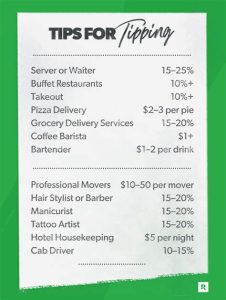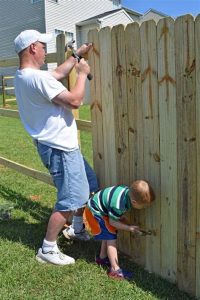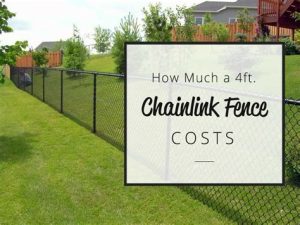Explore the benefits, challenges, and costs of winter fence installation, plus tips for success and how materials are impacted during colder months.When winter arrives, many homeowners ponder the practicality of installing a fence during the colder months. While frosty temperatures and icy terrains may present unique challenges, there are also compelling reasons to consider this task at this time of year. From potential cost savings to the reduced disruption of outdoor plans, winter can actually present a favorable window for fence installation. However, with benefits come hurdles, including obstacles related to materials and weather conditions that could affect the installation process. In this blog post, we will explore the pros and cons of putting up a fence in winter, taking a closer look at factors like impact on materials, cost considerations, and essential tips for ensuring a successful installation. Whether you’re contemplating a winter project or simply curious about the possibilities, we’ve got you covered!
Benefits of Installing a Fence in Winter
Installing a fence during the winter months can often be viewed as a daunting task, but it also comes with several significant benefits. While some may hesitate due to the cold weather, making the decision to proceed with installation can yield rewards that enhance both the property and the overall fencing experience.
One of the primary benefits is that contractors are typically less busy in winter, which can lead to lower costs and better availability for scheduling. Homeowners can take advantage of discounts or promotional offers that are often available during off-peak seasons. Furthermore, choosing to install a fence in winter means that your yard will be ready and secure for spring, allowing for immediate enjoyment as soon as the temperatures rise.
Another advantage to consider is the ground conditions. Frozen ground can actually make it easier to dig and install posts without worrying about mud and soft earth that can impede progress during warmer months. This can lead to a more efficient process, ensuring that your new fence is installed smoothly and quickly.
Challenges of Installing a Fence in Winter
Installing a fence in winter can be quite a challenge due to the various environmental factors that come into play. Cold temperatures, snow, and icy conditions can significantly hinder the installation process, making it essential to be prepared for any unexpected difficulties.
One of the primary challenges is the frozen ground. When the ground is frozen, it becomes exceptionally challenging to dig post holes and establish the foundation for your fence. This can lead to delays in the project timeline as crews may require specialized equipment to break through the icy layers.
Moreover, the presence of snow can obstruct visibility and access to necessary tools and materials. Weather conditions can change abruptly, resulting in increased safety hazards for workers. Additionally, materials like concrete and wood may behave differently in colder climates, potentially affecting the long-term durability of your fence.
| Challenge | Description |
|---|---|
| Frozen Ground | Difficulty in digging post holes and setting foundations. |
| Snow and Ice | Obstruction to visibility and access, leading to increased safety hazards. |
| Material Behavior | Potential issues with durability and performance of materials in cold temperatures. |
Impact on Fence Material
When considering fence installation during the winter months, it’s essential to understand the impact on fence material. Different materials react distinctively to cold temperatures, moisture, and frost, which can affect their performance and longevity.
For example, wood fences can absorb moisture when the ground is thawed, leading to the potential for warping or swelling. Additionally, the cold can make wood more brittle, increasing the risk of cracks during installation. To mitigate these issues, it’s crucial to choose treated wood designed to withstand cold weather.
On the other hand, vinyl fences have a different set of challenges. While they can be installed in winter, extreme cold temperatures can make vinyl more susceptible to cracking if struck or forced versus more moderate conditions. Therefore, it’s advisable to consider temperature guidelines provided by manufacturers before choosing to install a vinyl fence in winter.
Metal fences, such as aluminum or wrought iron, may also face challenges. The ground may be frozen or too hard to dig deep enough for a stable installation, which can compromise the integrity of the fence over time. Moreover, if metal components are left exposed to harsh winter conditions, they are at risk of moisture accumulation, leading to rust and corrosion.
Understanding these material-specific impacts allows for more informed decision-making, helping homeowners select the appropriate type of fence for winter installation and ensuring it withstands seasonal challenges.
Cost Considerations for Winter Installation
When contemplating the installation of a fence during the winter months, cost considerations play a crucial role in the decision-making process. It’s essential to evaluate both the potential savings and extra expenses that may arise from winter installations.
One of the significant benefits of installing a fence in winter is the potential for lower labor costs. Many contractors may offer discounts during the off-peak season, leading to reduced overall expenses. However, it is also vital to consider whether the harsher winter conditions could lead to unforeseen additional costs for equipment or delays.
The type of fence materials chosen can significantly impact the overall cost. For example, wood fences might require more careful handling in cold weather to prevent damage from freezing temperatures, while vinyl or metal materials may be less affected. Understanding the materials and their attributes can help inform your budgeting for winter installation.
Lastly, consider potential landscaping issues during installation. If the ground is frozen, digging post holes may require extra tools or methods, increasing labor time and cost. Obtaining a comprehensive quote that accounts for these factors can help you make an informed financial decision when planning your fence installation this winter.
Tips for Successful Winter Fence Installation
Installing a fence during the winter months can be challenging yet rewarding. With the right preparation and approach, you can ensure a smooth installation process. Here are some essential tips to consider for successful winter fence installation.
1. Choose the Right Materials: Winter weather conditions can affect various materials differently. Opt for durable fence materials that can withstand freezing temperatures without becoming brittle. Materials like vinyl and metal are excellent choices, while wood may require special treatment to minimize moisture absorption.
2. Prepare the Ground: Before installation, check the ground conditions. Frozen ground can make it difficult to dig post holes. Use a post hole digger or heat the ground with a propane torch if necessary. This step is crucial to ensure that your posts are secure and stable when the freeze-thaw cycle begins.
3. Plan for Shorter Daylight Hours: Shorter days and colder weather may limit your installation time. Plan your project carefully and consider using additional lighting to facilitate work during darker hours, especially if working toward a deadline.
| Tip | Description |
|---|---|
| Choose the Right Materials | Opt for durable materials like vinyl and metal that can withstand winter conditions. |
| Prepare the Ground | Ensure you can dig properly, even if it means thawing the ground to create post holes. |
| Plan for Shorter Daylight Hours | Adjust your work schedule to utilize available daylight and consider adding lighting. |
By following these tips, you will significantly improve your chances of a successful winter fence installation.
Frequently Asked Questions
Is it possible to install a fence in winter?
Yes, a fence can be installed in winter, but there are specific considerations to take into account, such as ground conditions and temperature.
What are the advantages of installing a fence in winter?
Some advantages include less competition for contractors, the potential for discounts on materials, and the ability to have the fence ready for spring.
What are the potential challenges of winter fence installation?
Challenges include frozen ground, which can make digging post holes difficult, and extreme weather conditions that can hinder the installation process.
How does cold weather affect the materials used in fencing?
Cold weather can affect materials like wood and vinyl, causing them to become brittle or warp. It’s essential to select materials that can withstand low temperatures.
What should homeowners consider before installing a fence in winter?
Homeowners should consider local weather conditions, the type of soil, and whether the ground is frozen, as these factors can impact the installation timeline.
Can contractors work in extreme cold conditions?
Many contractors can work in cold conditions, but they may have to adapt their techniques and use specialized equipment to handle frozen ground.
What maintenance should be considered for winter-installed fences?
Proper maintenance includes checking for any frost heave, ensuring drainage around the fence, and occasionally clearing snow away to prevent damage.





